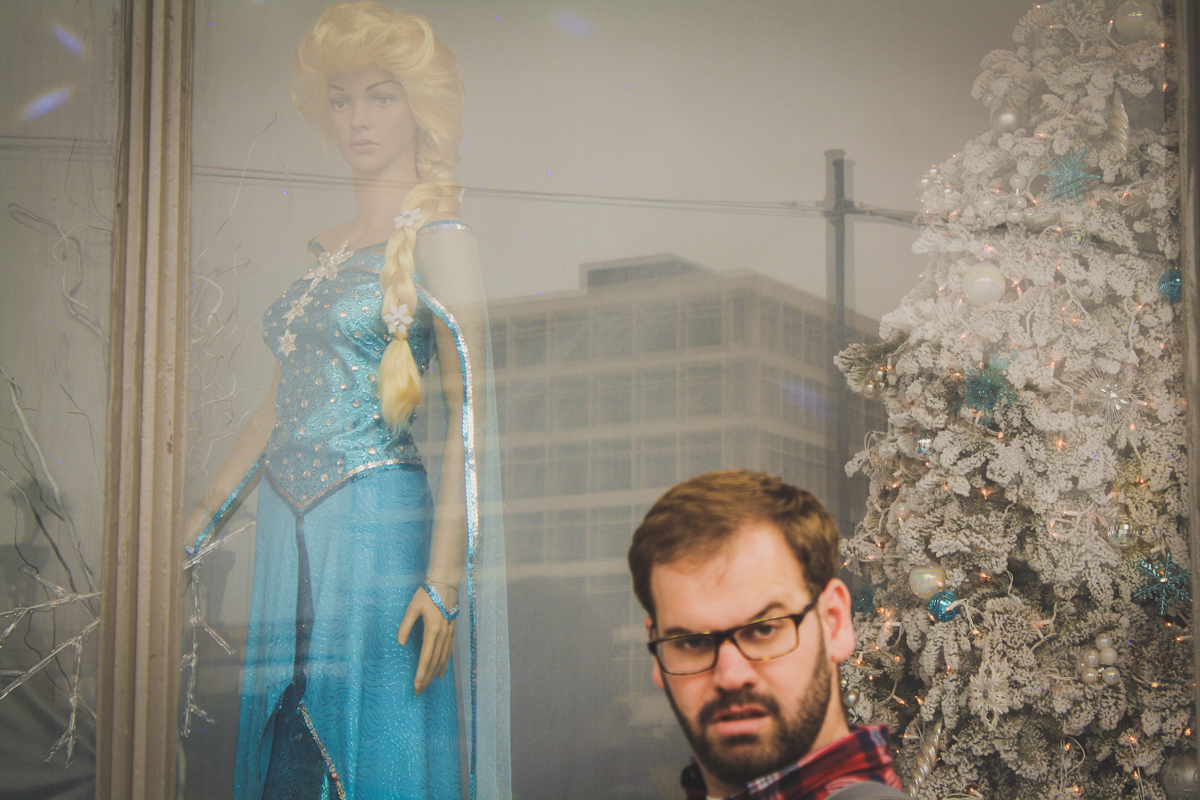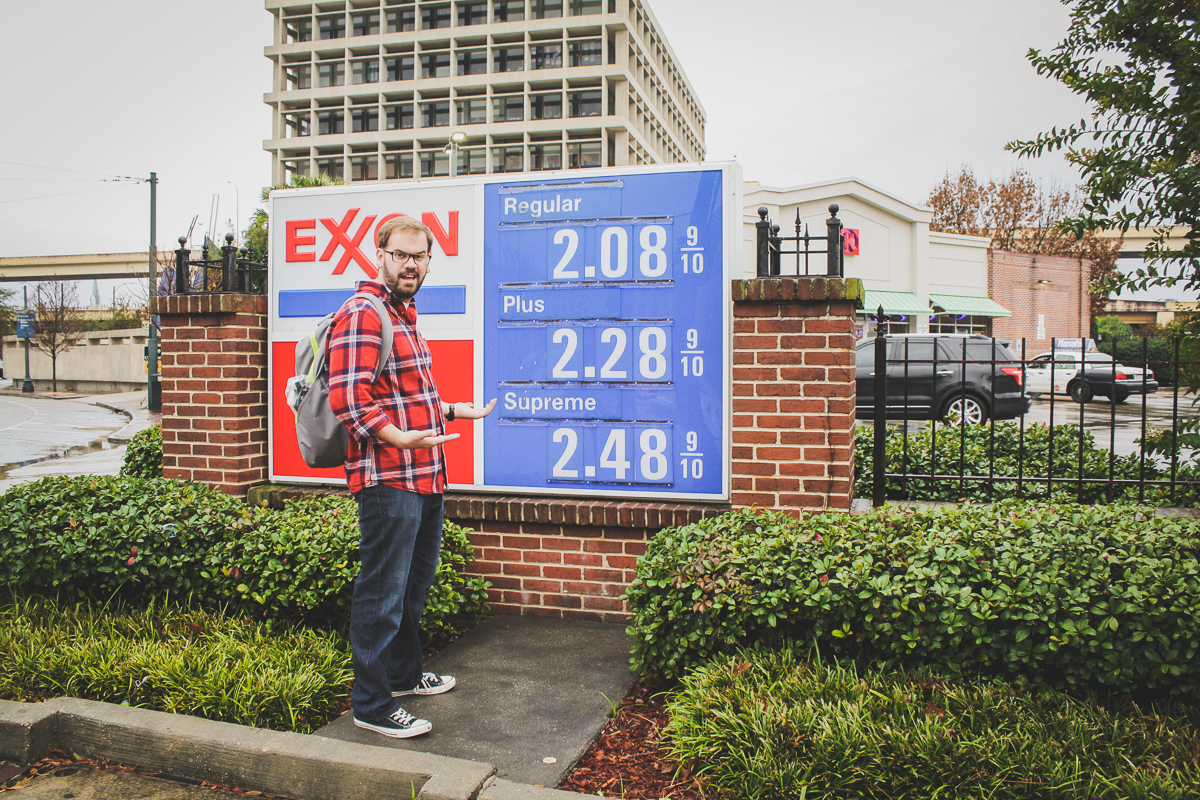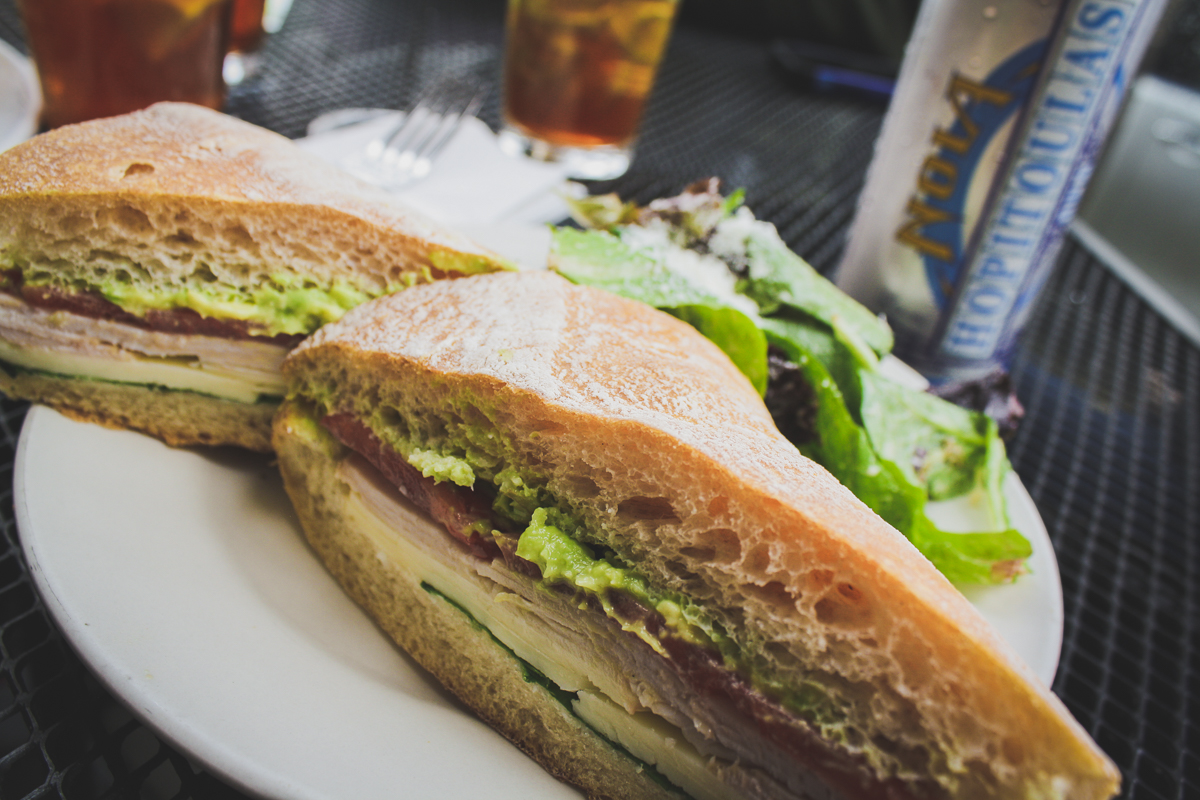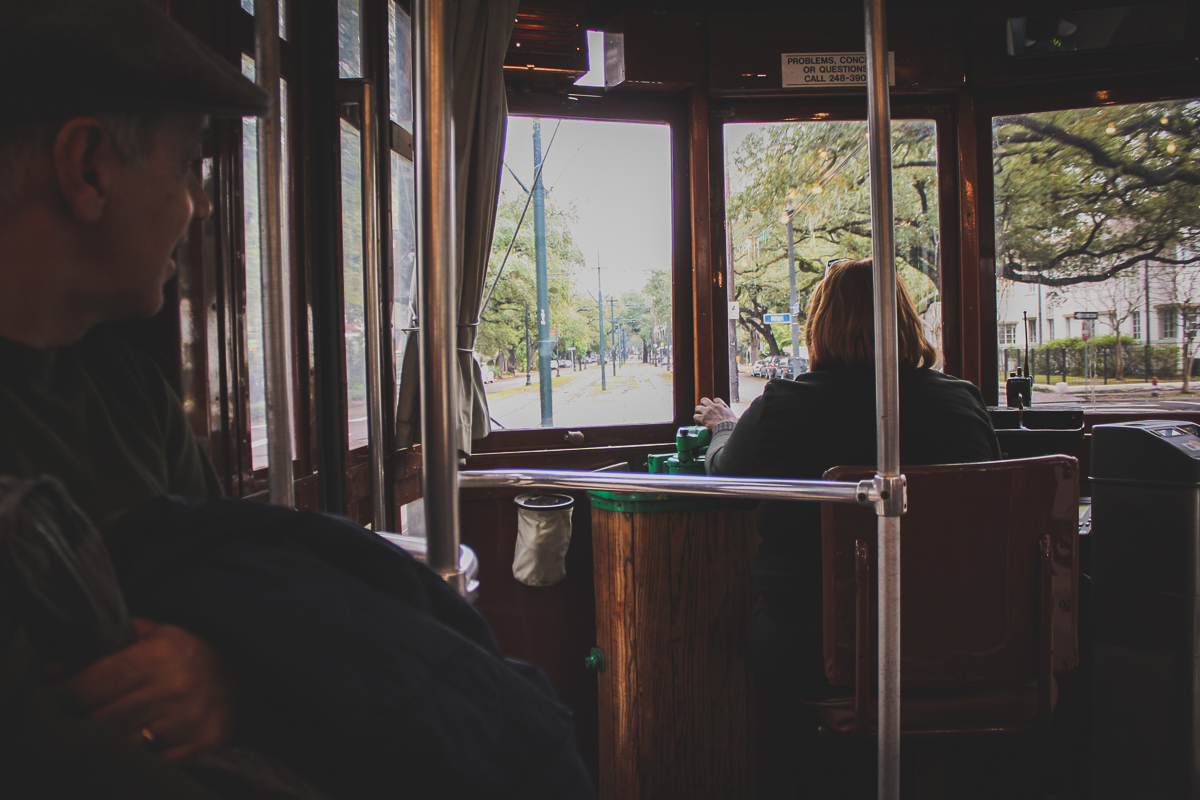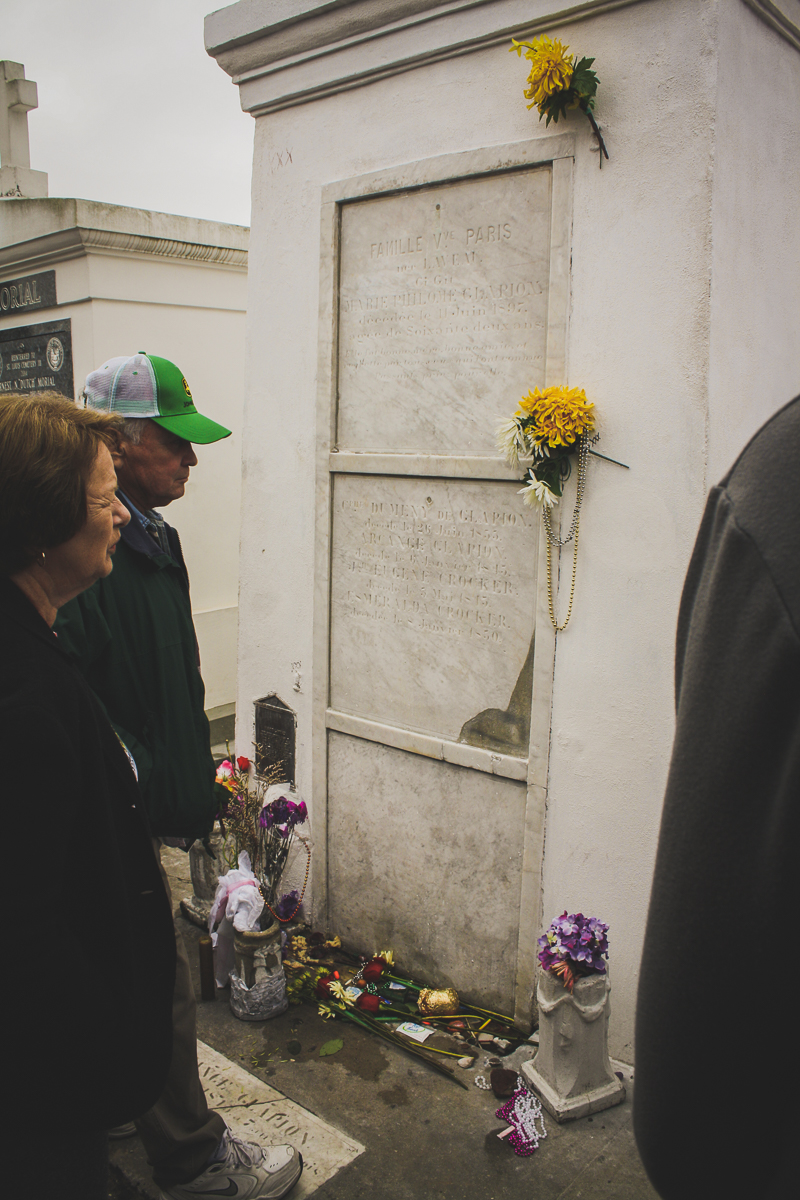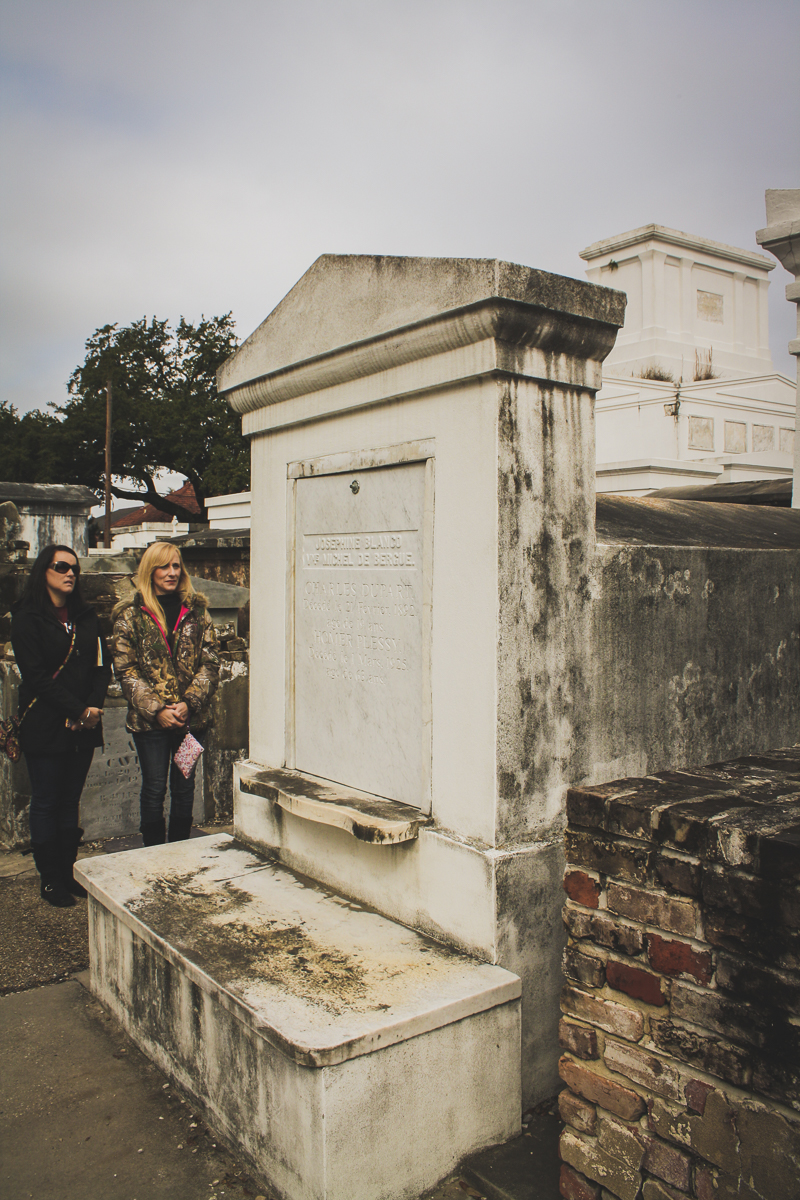The Garden District, in New Orleans, was one of America's earliest luxury suburbs. According to Wikipedia, the area began as "a number of plantations...sold off in parcels to mainly wealthy Americans who did not want to live in the French Quarter with the Creoles." It was like a cultural "white flight" and a Beverly Hills before its time. Once characterized by large swaths of gardens between the stately mansions, today the Garden District is known for its charming southern architecture and the list of celebrities who call the area their home (or more appropriately, have a home in the area). At just two miles away from the French Quarter and easily accessible by street car, a stroll through the gardens was high up on the to-do list.
The street car in mention is the St. Charles Streetcar Line, opened in 1835, making it the oldest continually operating street car in the world. With one end-of-the-line across from our hotel and fares as low as a $3 all-day "Jazzy pass", it was an terrific and affordable means of transportation. Used heavily by tourists (the early-20th century design makes the streetcar feel almost like a ride) the streetcar is also frequented by locals rolling their eyes at the tourists while on their way to work. My favorite feature of the streetcars is that they are completely reversible—upon reaching the end of the line, the conductor can flip the symmetrical seating to face in the new-forward direction and then drive the car from the opposite end.
We were the first people aboard our streetcar and happily took our seats, impressed at the comfortable transportation. Within two stops however, we were packed in like sardines by other tourists hoping to make the same trek as us. The drizzly-weather outside the car and the compressed body heat inside the car led all the windows to fog up; Our streetcar grumbled onward down the track like a microwaved Twinkie.
The first stop we got off on was at Lee Circle. From there, we walked a few blocks south to The National WWII Museum. Originally the D-Day Museum, New Orleans is home to one of the best museums for America's involvement in World War II. However, when we got in there, the place was jam-packed! We were quoted at a 60 minute wait to purchase tickets, followed by another 60-90 minute wait to enter the museum!
I work in the travel/tourist-industry. I had no right to be shocked by this. Why would I think I could take time off from my place of work during our busiest week of the year and then think it would be any different elsewhere? Despite the fact that the museum was at the top of my list for New Orleans, we chose to not wait. There's always next time!
We made it back to Lee Circle to wait for the next street car. Standing beside the street, I looked back to the lone column on which a statue of Robert E. Lee perched. There he stood with his back to us and his arms folded, as if showing disapproval. Sorry Robert E. Lee.
When the street car finally arrived, we squeezed on and made way to the Garden District. You can see and feel the transition as plants began to grow thicker on each side of the street and shops gave way to houses, growing in size and we rolled along. We took a guess at a stop and got off, lured by the intrigue of "Lafayette Cemetery No 1". We walked down a quaint stretch through lovely, and expensive, houses.
We arrived at Lafayette Cemetery No 1 within a minute or two. I think we were hoping to peer through the gates but saw that they were wide open and tourists were strolling up and down the plots. We looked at each other and elected to go in.
It was strange to wander through a cemetery of this size. I've been to Arlington National Cemetery before and while strange, there's something about it that feels like I have the right to be there, as an American. Lafayette's Cemetery No 1 was much smaller however, just one block by one block in size. It was filled with small family plots, and a few larger guild plots (such as the local firefighters), in various states of decay. You could read family histories on some of the structures, complete with names, dates, and even which wars the family sent soldiers to. Plants of all the local flora, from mosses to trees, had wedged themselves in and around the grave sites. The cemetery felt both ancient and preserved, like an archeological site still in use.
From the cemetery, we walked onwards through the houses. Across the street was the Commander Palace Restaurant, a famous (and expensive) classic New Orleans restaurant. We knew we were growing hungry but were trying to stretch our wallets, so we passed. We took to the inter-webs and found a row of restaurants one quick street car ride away and took a chance. We found ourselves at a fast-casual shop that makes their own cheeses and specializes in cheese sandwiches. It felt hipster. It felt local. It felt perfect.
I think it's safe to say that it was one of our favorite meals of the trip.
After lunch, it was nap time. No really, we figured it was time for a nap, so we caught a street car back into town, concluding our visit to the Garden District. The thing about calling a neighborhood an "attraction" is it's hard to know where to look. Unlike the French Quarter, which is so condensed that anywhere you turn is something interesting to see, the Garden District is a suburb; you can walk for sometime without seeing anything out of the ordinary. I completely recommend going but I do recommend going with a guided tour, to derive more information and intrigue from what is in essence, people's houses.
When I wrote about my experience in the French Quarter, I struggled to find a way to include our stroll through the Saint Louis Cemetery Number One. We experienced the cemetery on our final morning through a "Voodoo tour" of New Orleans. The cemetery quite literally lies just outside the bounds of the French Quarter (by design), so it didn't seem to fit with our French Quarter experience. Knowing I was including pictures of the Lafayette Cemetery in this post, I figured it would feel more natural to include Saint Louis Cemetery photos here.
Even as I write this, I know that I was wrong.
But regardless, here are some photos I took while in the Saint Louis Cemetery Number One—
The Saint Louis Cemetery Number One had three remarkable features.
Latin for "I'm more of a 'treasure protector'."
- Nicolas Cage, who apparently has a love and affinity for New Orleans, has already purchased his plot in this cemetery. It's a pyramid shaped block, very National Treasure.
- Marie Laveau was buried here. She was a Voodoo practitioner (some say "priestess") who acquired some fame in life. As we were on a Voodoo tour, we spent some time in front of her grave. Cindy even made a coin-offering to her!
- And finally, for another history lesson, Homer Plessy is buried here. If you don't recognize the name, I encourage you to read up on him as he is a very early hero of what would one day become the Civil Rights Movement. Just as Rosa Parks would do in the 1950's, Homer Plessy committed a calculated and deliberate act of civil disobedience by in 1892, sitting on a rail-car designated for "Whites" only. The purpose of this was to be arrested and in court, challenge the legal status of the "separate but equal" segregation doctrine. The case, Plessy v. Ferguson, would ultimately reach the Supreme Court and be ruled against his favor, thereby preserving the legal standing of segregation. This legal interpretation would remain unchallenged until 1954, when Brown v. Board of Education ruled that segregation, in public education, was unconstitutional. This paved the way for Plessy v. Ferguson to formally be overturned in 1964, when the legislature passed the Civil Rights Act.
Interestingly, as a perfect concluding observation, Plessy was buried in this heavily Creole, French Quarter adjacent cemetery. John Howard Ferguson, the judge who argued against Plessy in front of the Supreme Court, was buried in the Garden District, in Lafayette Cemetery No One.
Thanks for putting up with my historical-ramblings! For more photos from our day in the Garden District (and of Saint Louis Cemetery Number One), check out the photo gallery below!
































